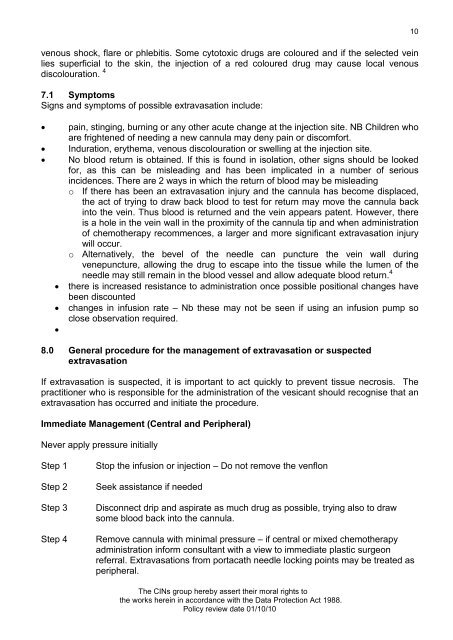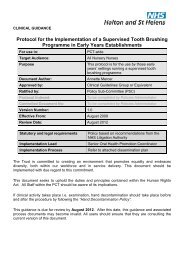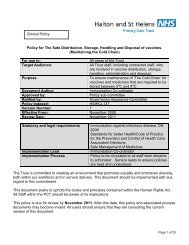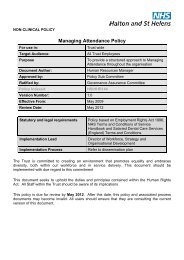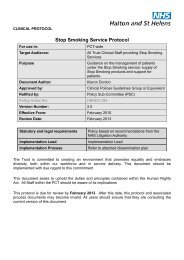Collaborative Intravenous Nursing Service (CINS) Guidelines
Collaborative Intravenous Nursing Service (CINS) Guidelines
Collaborative Intravenous Nursing Service (CINS) Guidelines
- No tags were found...
Create successful ePaper yourself
Turn your PDF publications into a flip-book with our unique Google optimized e-Paper software.
venous shock, flare or phlebitis. Some cytotoxic drugs are coloured and if the selected veinlies superficial to the skin, the injection of a red coloured drug may cause local venousdiscolouration. 47.1 SymptomsSigns and symptoms of possible extravasation include:• pain, stinging, burning or any other acute change at the injection site. NB Children whoare frightened of needing a new cannula may deny pain or discomfort.• Induration, erythema, venous discolouration or swelling at the injection site.• No blood return is obtained. If this is found in isolation, other signs should be lookedfor, as this can be misleading and has been implicated in a number of seriousincidences. There are 2 ways in which the return of blood may be misleadingo If there has been an extravasation injury and the cannula has become displaced,the act of trying to draw back blood to test for return may move the cannula backinto the vein. Thus blood is returned and the vein appears patent. However, thereis a hole in the vein wall in the proximity of the cannula tip and when administrationof chemotherapy recommences, a larger and more significant extravasation injurywill occur.o Alternatively, the bevel of the needle can puncture the vein wall duringvenepuncture, allowing the drug to escape into the tissue while the lumen of theneedle may still remain in the blood vessel and allow adequate blood return. 4• there is increased resistance to administration once possible positional changes havebeen discounted• changes in infusion rate – Nb these may not be seen if using an infusion pump soclose observation required.•8.0 General procedure for the management of extravasation or suspectedextravasationIf extravasation is suspected, it is important to act quickly to prevent tissue necrosis. Thepractitioner who is responsible for the administration of the vesicant should recognise that anextravasation has occurred and initiate the procedure.Immediate Management (Central and Peripheral)Never apply pressure initially10Step 1Step 2Step 3Step 4Stop the infusion or injection – Do not remove the venflonSeek assistance if neededDisconnect drip and aspirate as much drug as possible, trying also to drawsome blood back into the cannula.Remove cannula with minimal pressure – if central or mixed chemotherapyadministration inform consultant with a view to immediate plastic surgeonreferral. Extravasations from portacath needle locking points may be treated asperipheral.The CINs group hereby assert their moral rights tothe works herein in accordance with the Data Protection Act 1988.Policy review date 01/10/10


